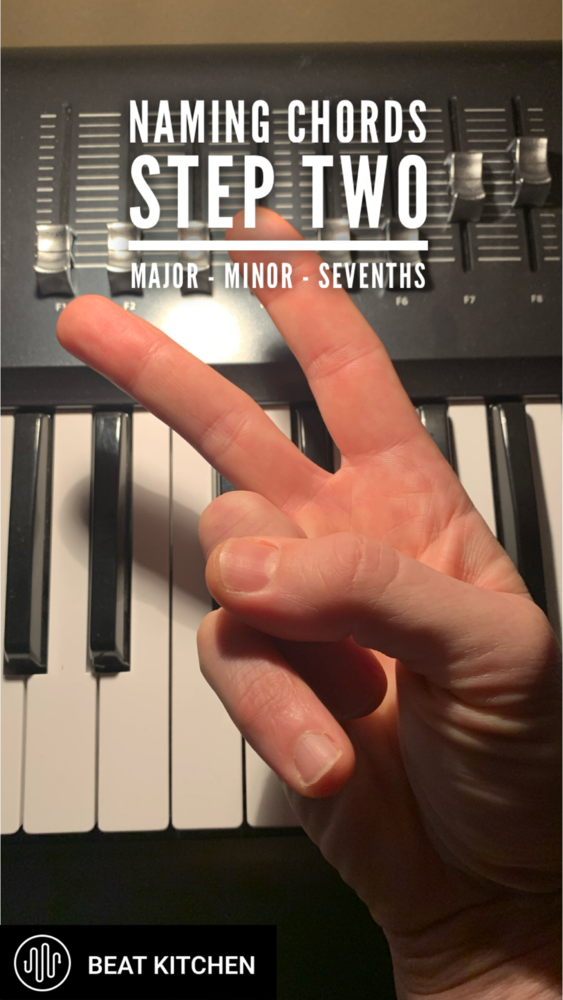Chord ID part 2. With the chord in its root position, most chords are going to sit solidly within these two pillars of a perfect fifth. This is a very stable sound and it’s a distance separated by seven half steps.
Now there are some edge cases and we’re going to look at those in another reel. But with the perfect fifth in place, the important questions about the chord can be answered by looking at the third and the seventh. The third is going to tell us if it’s major or minor and the seventh, if there is one, is going to tell us about the function of the chord.
If you’ve got yourself four half steps in between the first note and the middle note, you’ve got yourself a major chord because that’s a major third. One half step less, it’s a minor third. Pretty much every three note chord is going to be major or minor.
If you have a chord with four notes, that top note is going to be called the seventh. It’s just seven scale degrees up from the root. The seventh is going to tell us about the function of the chord.
If the seventh is just one half step away from the root, that is a major seventh. If it’s got a little more space, a full step, that’s a dominant seventh. So that’s both three note chord and four note chords based around a perfect fifth.
They’re either major or minor and they’re either dominant or major For the others, hit the follow button and I’ll see you there.

